NEWS
Lift Rod stress tensor of materials
Time:2021-04-16 View:

When an object is deformed due to external factors (such as stress, humidity, temperature field changes, etc.), an interactive internal force is generated between various parts of the object to resist this external factor, and try to restore the object from the position after deformation to the position before deformation.
The internal force on a unit area of the investigated section is called stress. Perpendicular to the same section is called normal stress, and tangent to the same section is called shear stress.
Stress State
When an object is deformed due to external factors (stress, humidity, temperature field changes, etc.), the internal force of interaction occurs between various parts of the object. The internal force per unit area is called stress. Stress is a vector, the component along the sectional normal direction is called normal stress, and the component along the tangential direction is called shear stress.
The stress of a point in an object in all possible directions is called the stress state of the point. But a point can be used for countless planes. Is it necessary to describe the stress state of a point by the stress on countless planes? Through the following analysis, it can be seen that the stress state of the point can be represented only by the stress on any set of three planes perpendicular to each other, the stress on other sections can be expressed by this group of stress and its orientation relationship with the section to be investigated.
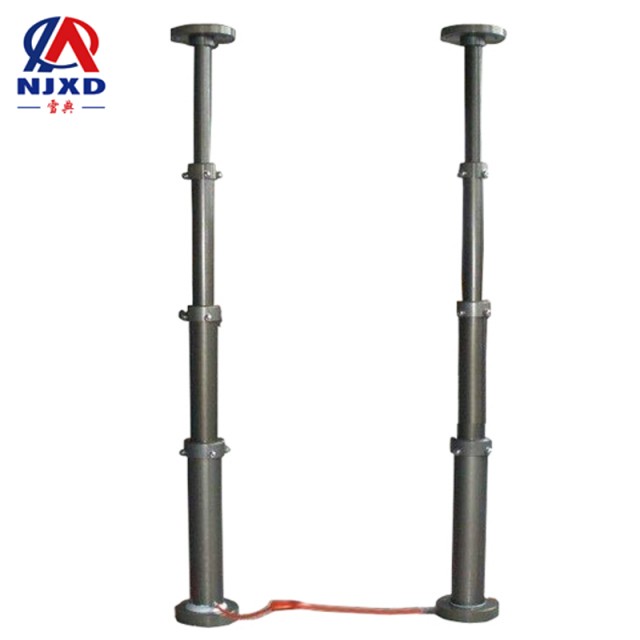
Stress tensor
Stress tensor
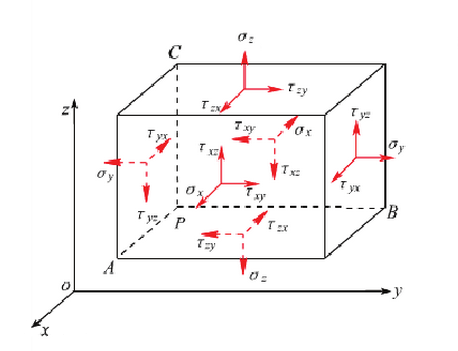
As shown in the figure, P is any point in the deformed body in the rectangular coordinate system 0XYZ, and a hexahedron whose planes are parallel to the coordinate plane is cut near this point. The stress components on the three planes perpendicular to each other on this hexahedral can represent the stress state of this point.
In order to specify the plus or minus of the stress component, first assume that the face whose normal direction is consistent with the coordinate axis is positive; The face whose negative direction is consistent with the coordinate axis is negative. Furthermore, it is stipulated that the positive stress pointing to the coordinate axis on the positive side is positive, and the negative stress pointing to the negative direction of the coordinate axis on the negative side is positive, and the negative stress pointing to the negative direction of the coordinate axis on the negative side is negative. There are nine stress components on the three front faces (including three positive stresses and six shear stresses). These nine stress components can be written in the following matrix form:
The first subscript of the stress component represents the normal direction of the action plane; The second subscript represents the direction of the stress action. The two subscripts of positive stress are the same, so use a subscript to short it.
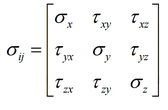
Due to the mutual theorem of shear stress, the diagonal shear stress in the matrix in the above column is equal, namely: Tau xy = tau yx, Tau yz = tau zy, Tau zx = tau xz. Therefore, this matrix is a symmetric matrix, and six of the nine stress components are independent.
Principal stress

If the full stress acting on a certain section is perpendicular to this section, that is, there is only normal stress on this section and the shear stress is zero, then this section is called the principal plane, its normal direction is called stress principal direction or stress principal axis, and its stress is called principal stress. If the directions of the three axes are the main directions, this coordinate system is called the main coordinate system.
In plastic mechanics, stress tensor is often decomposed:

In the formula, it is called average normal stress. The first item at the right end of the equal sign is called spherical stress tensor; The second item can be recorded:

It is called the stress bias tensor.
Stress tensor invariants
In the process of solving principal stress, a cubic equation with principal stress as unknown number is obtained, which is called the equation of state.

The three coefficients of the equation of state are uniquely determined by principal stress, while the principal stress at one point is unique, thus three quantities that do not change with coordinates are obtained, which are called stress tensor invariants.
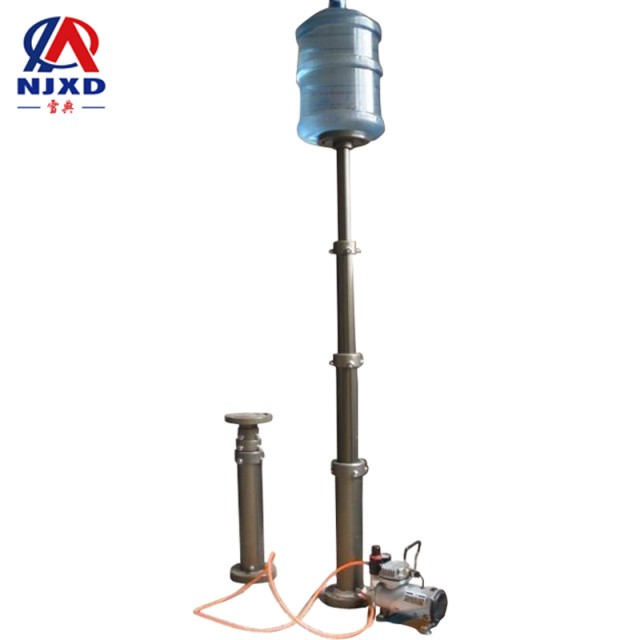
Equilibrium differential equation
The above descriptions are all stress states at one point, while the stress states at different points inside objects are generally different, so how to describe the stress change relationship between adjacent points?
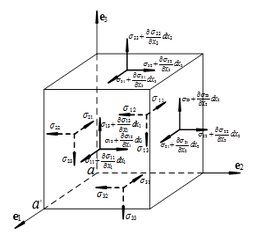
Take a point P(x,y,z) in the object as the vertex to intercept the right-angle parallelepiped microelements whose side lengths are dx,dy and dz respectively, the coordinates of the other vertex are (x + dx,y + dy,z + dz). According to the static equilibrium equation, the differential equation of stress equilibrium is obtained by dealing with high-order small quantities.
